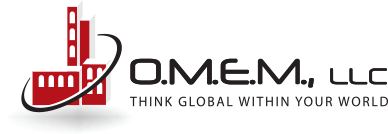Often times, there exists two extremes in the style or approach that is taken by those assigned to directly link and coordinate people, processes, and output. This also will typically be specific to the individual in that role with two main extreme styles; direct and absent. With the direct hands on approach, an individual will be everywhere all the time and always seems to show up to make the decision when a decision is required to be made. Many folks call this micromanaging while some will call it a desire for power and yet others see it is a lack of trust in the working staff. In either case, this style requires a lot of energy to maintain production and service levels that become dependent on a pivotal position which in the end increases the risk for a failure as the process is not necessarily well developed. The second approach which typically stands out is the absent and hands off approach. This style relates to those individuals whom never seem to be around when needed for advice or never really monitor the process during work flow. They do get involved in the production or service, but typically only at the end when it is too late. The argument for this method tends to be, it empowers the work force to function within their skills, but the results will typically lead to a gradual breakdown of the process and eventually infuses limitations on production and service levels. Neither of these two extremes is beneficial to the organization and is indicative of larger problems within the structure, which will prevent long term growth and impeded improvements on efficiency and effectiveness. Lastly, there is a third style, which is the individual who finds the balance between when they need to get involved in the process and at the same time monitor the production or service level. The folks that do this well empower the staff with a level of confidence that still requires routine direct communication but constantly involves education of the the work and process flow while sharing in the production and service results.
With every position in the organization, if one individual were removed, it is important to ask if the structure would stay intact. Considering a solid foundation regarding work flow and process flow, if constructed, documented, and followed adequately, the actual individual becomes an agent for structure as opposed to actually being the structure. When a person is very hands on, the staff will become more dependent on the individual and less confident on their skills. In many cases, this style will establish a relatively low level of performance by the work force. For example, if a routine or common problem arises causing a stop in production or service, and the dependency is such that requires a manager or supervisor to direct corrective activities, the length of the production or service stoppage can potentially last longer than otherwise necessary. On the opposite end, with a completely hands off style, and given the same routine or common problem, not only can the same potential result occur but also the knowledge of it may not be known until later when the final production is short or service has taken longer. The balanced approach must be the goal for any manager or supervisor in order to deliver optimum results and set the stage for growth, efficiency, and effectiveness.
Within many businesses today, we see many smaller tasks being assigned to an individual that takes them away from their primary focus. On top of this, in many cases, other internal activities such as meetings seem to take over a majority of the days work. This statement is huge to determining the effectiveness of the supervisory or managerial role. Step back for a moment and consider the amount of time each role spends in these Other activities in a given day and even a given week. Then factor in the expectations towards what that same role should be doing when not performing these activities. I would bet in many cases, the threshold has been exceeded to the point where the individual in the role cannot possibly find a balance because they are taken out of the roles expectations too frequently. Then the question remains; Who is expected to monitor the work flow and process as well as maintain an optimum level of performance? We have all heard the phrase regarding skills; Expert of many and master of none. This same logic is sometimes forced onto those roles that are expected to ensure optimum performance levels due to added non-productive activities. In reading this you may be thinking, But Scott I cannot afford to hire someone to solely do these tasks or get involved in these non-productive activities!. To this, consider the current level of effectiveness and efficiency. Also consider waste, down time, rework, overages, etc. for one day and even one week. Now factor in the cost and impact to the organization and dont forget to count in peripheral areas or functions these issues impact. Now calculate this over a year period. Where does the final number end up? What is the impact to profit margins? Now ask yourself if you truly cant afford it?
Keep the workforce focused on what they need to be focusing on and dont get them sidetracked on non-productive activities that eventually have a negative cost impact to the organization.
Stay Well
Scott B.
Previous Article
Information Systems Right Sizing the Database for Growth
0 Comments
Leave a reply
You must be logged in to post a comment.


